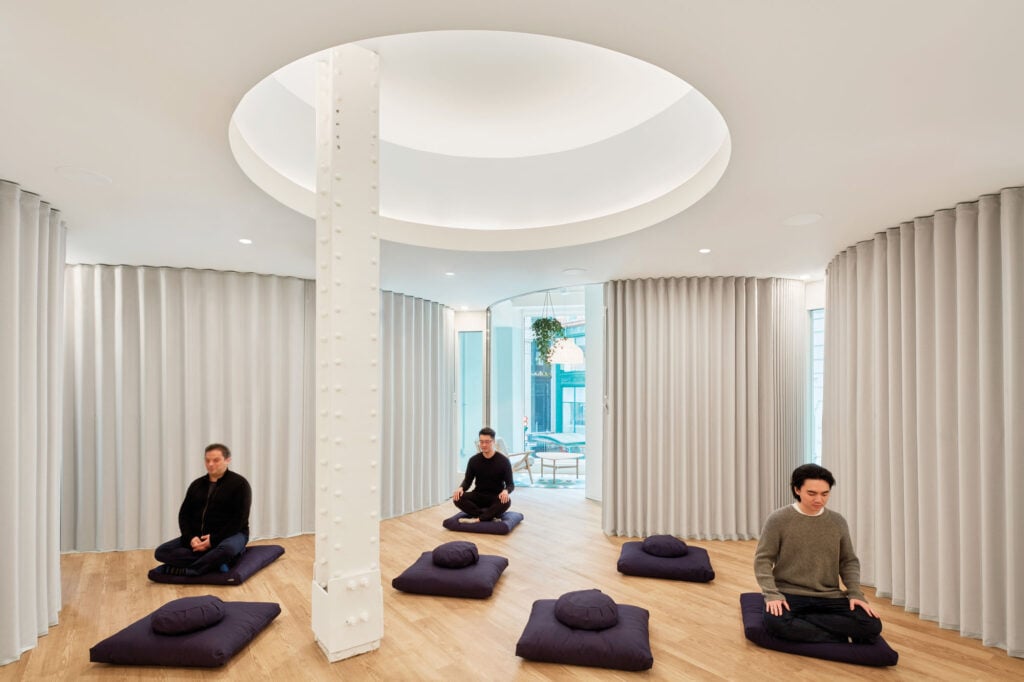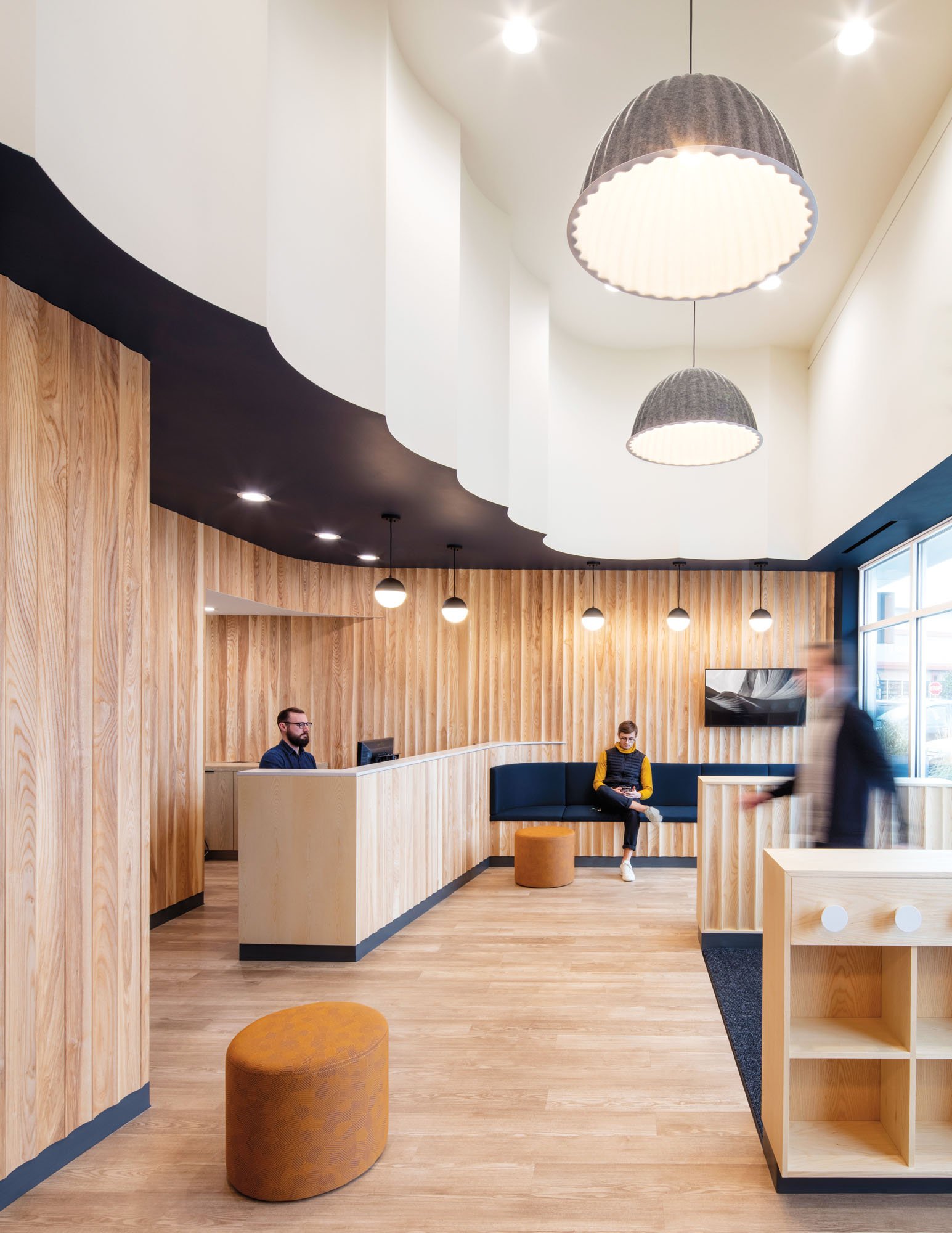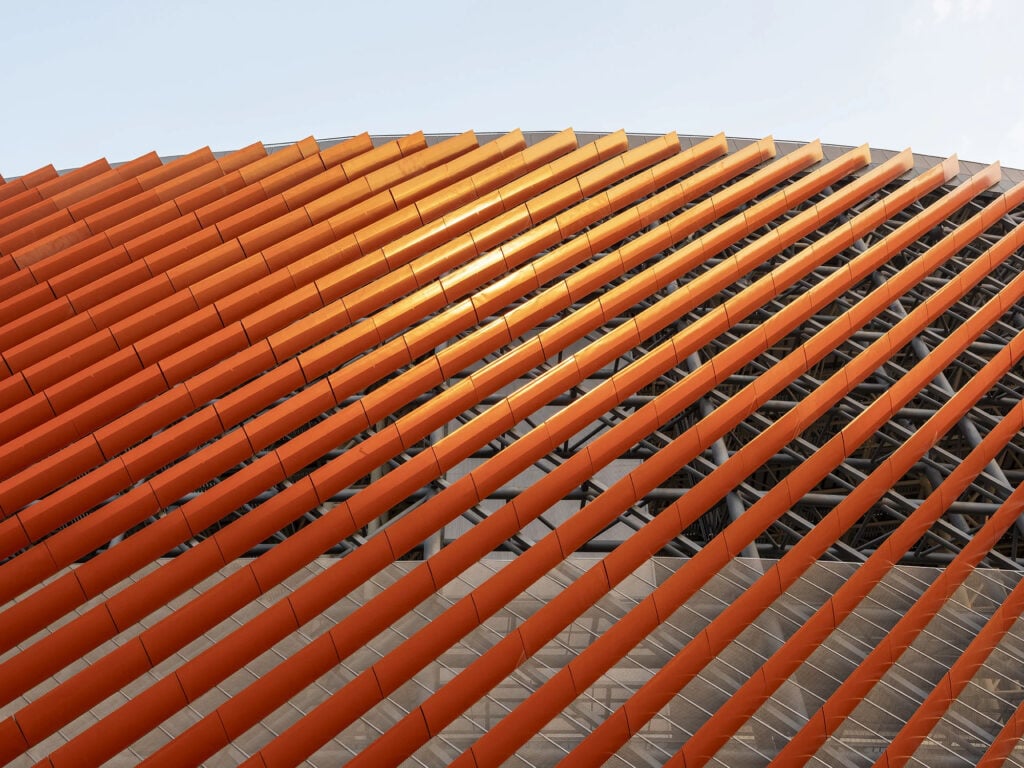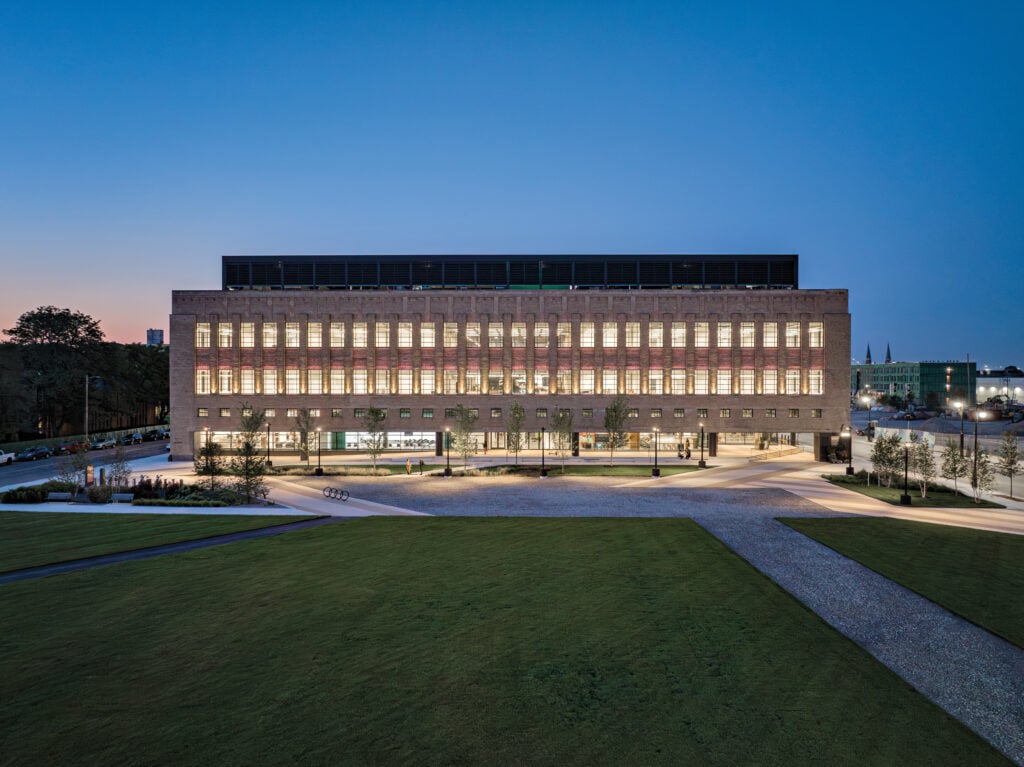
October 19, 2021
For Merge Architects, Interiors Matter as Much as Facades

Regardless of scale, Whittaker prioritizes user-centric issues such as occupant health and material sustainability. Practice makes perfect: Whittaker says the team at Merge routinely earmarks time to perform sustainability design exercises, like submitting to Boston’s Triple Decker Challenge competition earlier this year, which the firm won. The charge was to create a proto-typical retrofit of the classic New England triple-decker apartment building that provides a more efficient building envelope, converts all power to electric, and adds a unit. The ambition is designing for a smaller overall carbon footprint.
“Even though we’re up to 25 people, we try to keep that spirit of exploration and resourcefulness,” Whittaker says. “We try to be inventive with normal conditions. I shouldn’t do small interiors projects because I can’t make a profit out of them. But I love doing them.”
One example: Ten Percent Happier is the maker of a mindfulness meditation app, for which Merge designed a 5,000-square-foot office—and a meditation space.
Would you like to comment on this article? Send your thoughts to: [email protected]
Latest
Profiles
Zoha Tasneem Centers Empathy and Ecology
The Parsons MFA interior design graduate has created an “amphibian interior” that responds to rising sea levels and their impacts on coastal communities.
Viewpoints
How Can We Design Buildings to Heal, Not Harm?
Jason McLennan—regenerative design pioneer and chief sustainability officer at Perkins&Will—on creating buildings that restore, replenish, and revive the natural world.
Products
Behind the Fine Art and Science of Glazing
Architects today are thinking beyond the curtain wall, using glass to deliver high energy performance and better comfort in a variety of buildings.








